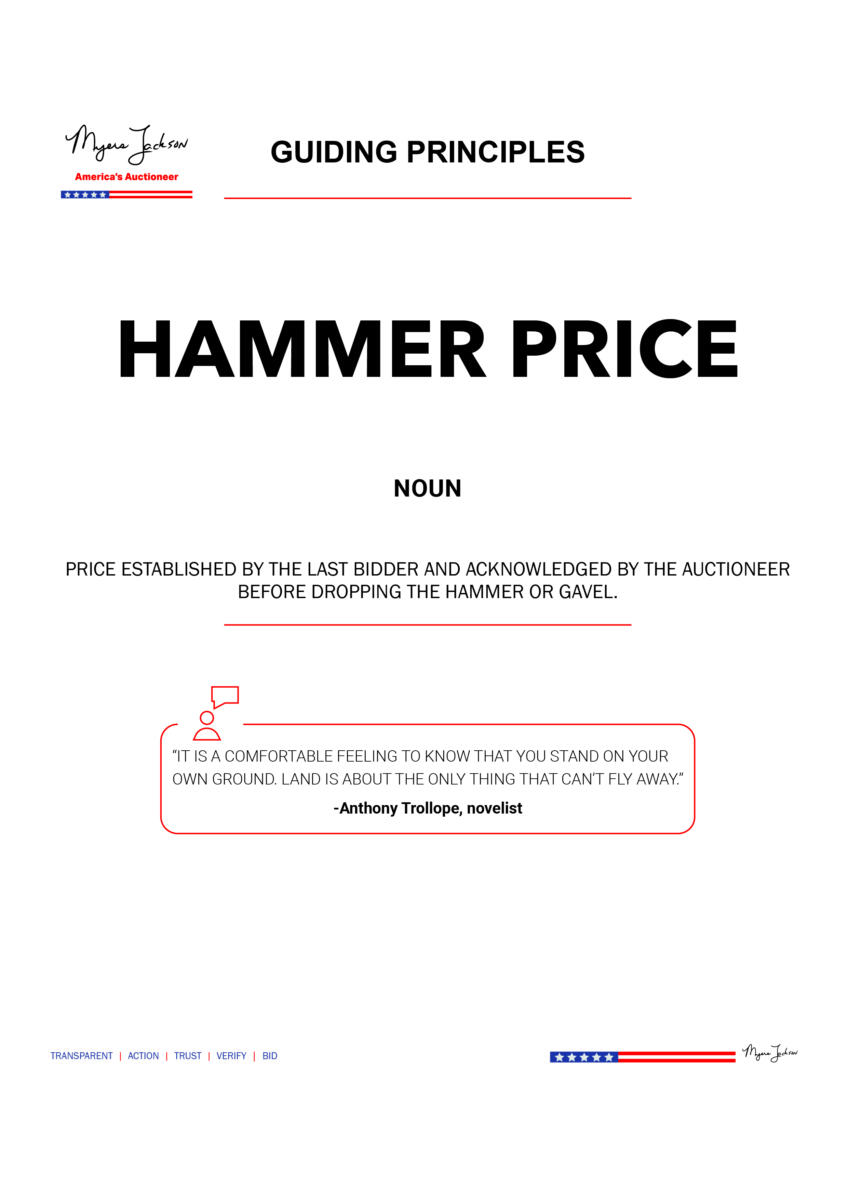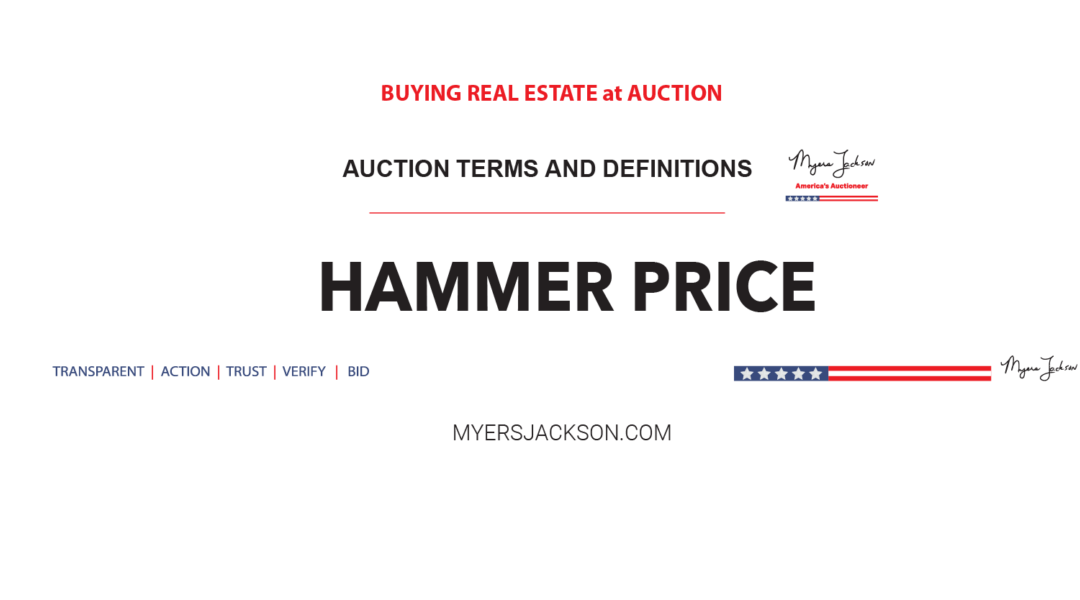Hammer Price
Price established by the highest bidder and acknowledged by the auctioneer before dropping the hammer or gavel.
Hammer price is what is commonly referred to the price obtained after the highest and best bid has been received from an individual or an entity that agrees to the terms and conditions of the sale. The auctioneer says sold at that price and that is known throughout the auction world as the hammer price. There are a number of things that must occur before the auctioneer says so, thus creating the hammer price. The auctioneer reads the terms conditions or publishes the terms and conditions of sale prior to calling for bids. The auctioneer will ask everyone in a public sale, from online bidding platform sources, take written offers, absentee bids, or the auctioneer can receive bids by email, text message or other electronic means. The auctioneer has received permission from the seller to administer all of these sources to determine who is willing to make the highest and best offer. When the auctioneer has achieved this and all the documentation is in place, the auctioneer can say sold at the strike of the hammer, or (some auctioneers will say the fall of the hammer) the property has then sold.
 In days gone by, the hammer price was commonly done from the auction block in this very instance just after bids were received, and the auctioneer determined the highest and best offer. In modern times with online bidding platforms, when the clock runs out (and this is most important part of this sentence, is when the clock runs out) this can also be acknowledged as the fall of the hammer. However, do you remember when we talked about caveat emptor? I want to let you know in this instance “buyer beware.” If the hammer does not fall or if the auctioneer in modern times does not make a electronic or written award, there may not be an established hammer price.
This instance may occur if the auction is extended for some reason. Moreover, a reason could be that the reserve was not reached. The auctioneer does not have the right to sell the property because there is no permission or authority to do so based on the sellers reserve.
 This could happen from the auction block and the auctioneer makes an oral announcement that the reserve has not been met. Additionally, an announcement could be made electronically by email or text alerting potential buyers that the reserve has not been met in the auction will continue, even though the clock had counted down to just seconds, the clock may be extended for an additional period of time as defined by the auctioneer.

For other terms and definitions
related to real estate auctions
For all active auctions,
and properties for sale
Get InTouch
Email:
411@myersjackson.com
Phone:
+1-844-400-2828 Phone
+1-469-460-4848 Text
Address:
Myers Jackson
P.O. Box 2014, Grapevine, TX 76099

